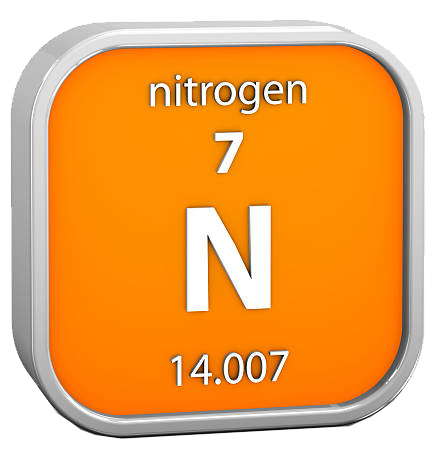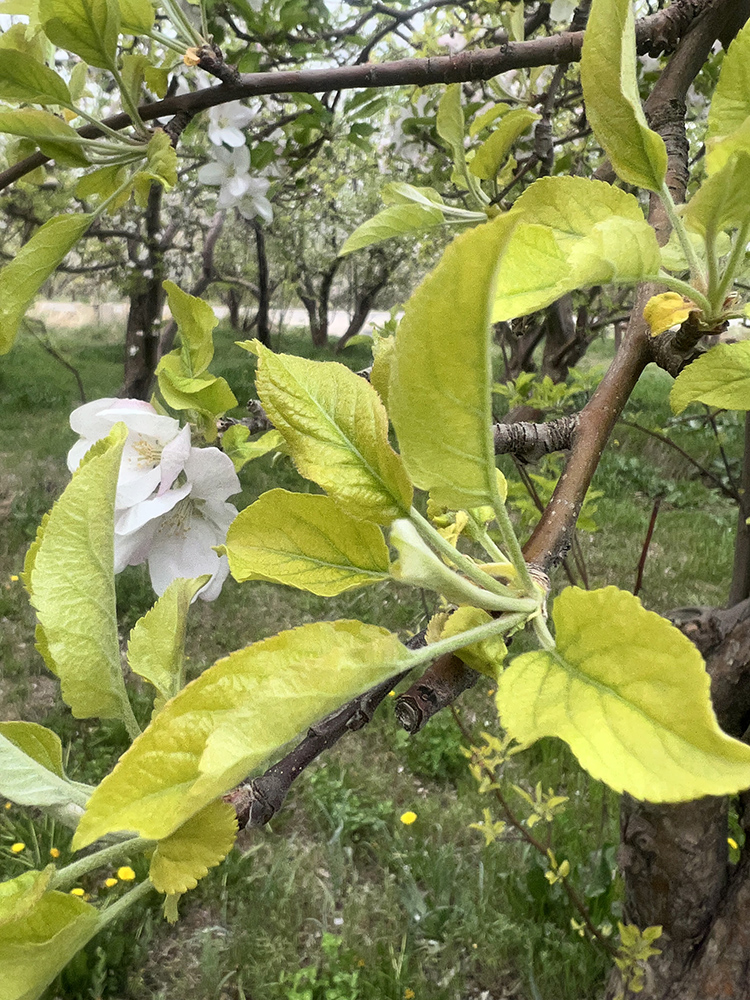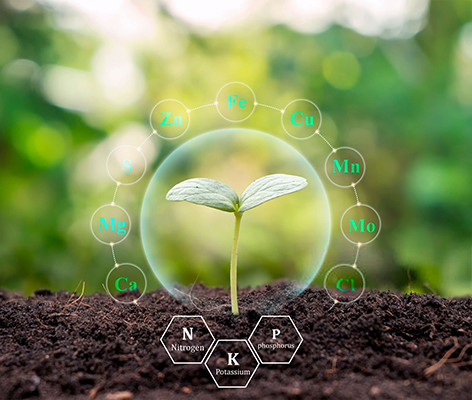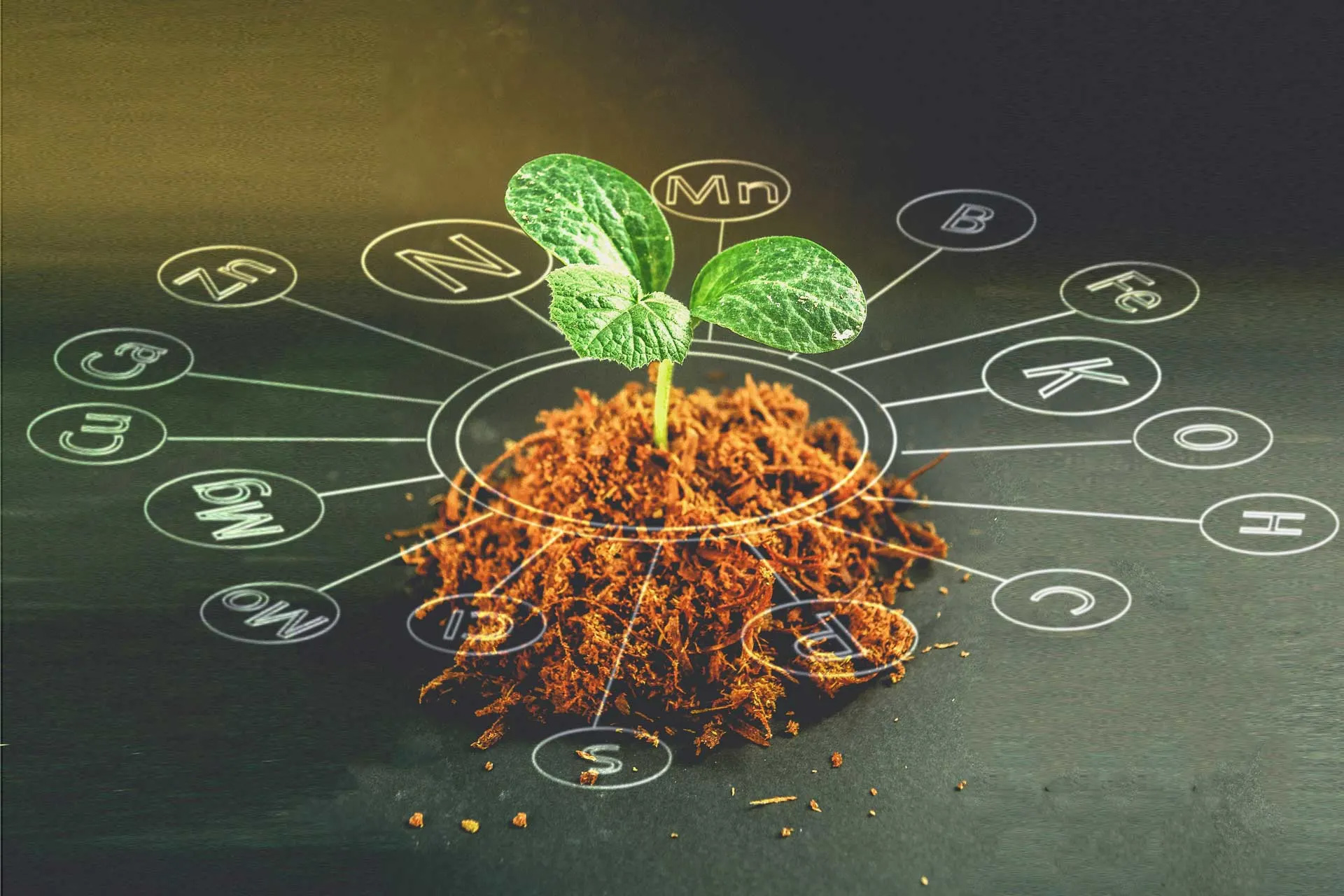Essential elements for plant growth
Essential elements for plant growth
Of the three most consumed elements, carbon, hydrogen, and oxygen enter the plant through the process of photosynthesis. Plants obtain carbon from the air through their leaves in the form of carbon dioxide. Oxygen is absorbed through both the leaves and the roots in the form of divalent oxygen. Hydrogen also enters the plant in the form of water.
Nitrogen

Nitrogen in soil organic matter (humus) is not available to plants. Plant roots absorb nitrogen in the form of ammonium, nitrite, and nitrate, although the nitrite form is toxic to plants and plants absorb this form of nitrogen in small amounts. Most nitrogen is absorbed by plants in the form of nitrate. Nitrogen in the ammonium form is obtained from the decomposition of soil organic matter by microorganisms under optimal conditions of temperature, moisture, pH, and oxygen.
The processes that increase soil nitrogen include: decomposition of soil organic matter proteins, fixation of gaseous inorganic nitrogen (N2) by symbiotic (rhizobium) and abiotic (Azotobacter, Cyanobacter, and Clostridium) organisms, use of nitrogen fertilizers (urea, ammonium nitrate, and potassium nitrate), rainfall and lightning that cause nitrogen oxidation and the formation of nitrate ions, decomposition of plant residues and animal manures, etc.
The highest amount of nitrogen is in young leaves and its amount decreases in old leaves.
Nitrogen in the form of nitrate in the soil moves in a mass manner along with the flow of water and is absorbed by the plant upon contact with the roots. However, in the form of ammonium, it moves in a diffusion manner in the soil and is absorbed by the plant.
Symptoms of nitrogen deficiency
Plants with nitrogen deficiency grow slowly and are weak, and the plant is pale. As the deficiency progresses, the old leaves turn yellow due to the movement of nitrogen from old to young tissues. Ultimately, nitrogen deficiency causes a decrease in crop quality and premature aging of the plant. Insufficient nitrogen supply in the first years limits growth and ultimately reduces yield potential. Premature shedding of immature leaves in autumn and increased susceptibility of trees to damage caused by low temperature stress are other side effects of reducing the amount of nitrogen in the plant.
When rainfall is sufficient during the growing season, nitrogen fertilizer can be applied until the flowers open. Nitrogen deficiency reduces the size of flowers and shortens the pollination period, and the annuality of nitrogen deficiency is intensified. It reduces fruit formation and increases fruit drop. The size of the fruit becomes small and their color becomes darker.
In general, the growth and fruiting of young trees is delayed, and nitrogen deficiency is exacerbated in dry climates and due to competition with weeds.

Symptoms of plant poisoning
Plants with high nitrogen levels are dark green and watery in texture and are susceptible to pest and disease attack, dormancy (dormancy) and water stress, and the crop may not be produced or may be of poor quality if produced. Excess nitrogen causes foliage and late season growth to develop and susceptibility to cold damage in late fall and winter. Delayed leaf fall and immaturity of woody tissues are other side effects of excess nitrogen. Using the right ratio of nitrate and ammonium is very effective in providing nitrogen to the plant for its growth.
In most plant species, the use of nitrate nitrogen increases the rate of net photosynthesis and yield due to increased leaf area and increased gas exchange, while the use of ammonium nitrogen reduces photosynthesis due to the reduction of these factors. When using ammonium nitrogen, be aware that increasing the concentration of ammonium in plant cells is toxic to the plant. Also, excessive use of ammonium nitrogen has led to flower bud rot in tomatoes and peppers due to reduced calcium absorption.
In years when the tree bears little fruit (years of fruiting), vegetative growth between 25 and 65 cm is acceptable growth, and in fruitful years, vegetative branch growth between 15 and 35 cm is appropriate.
Nitrogen fertilizer needs are influenced by the following factors:
- Plant variety and breed
- Tree age and growth strength
- The base is directly related to the amount of wood, large branches, and roots.

